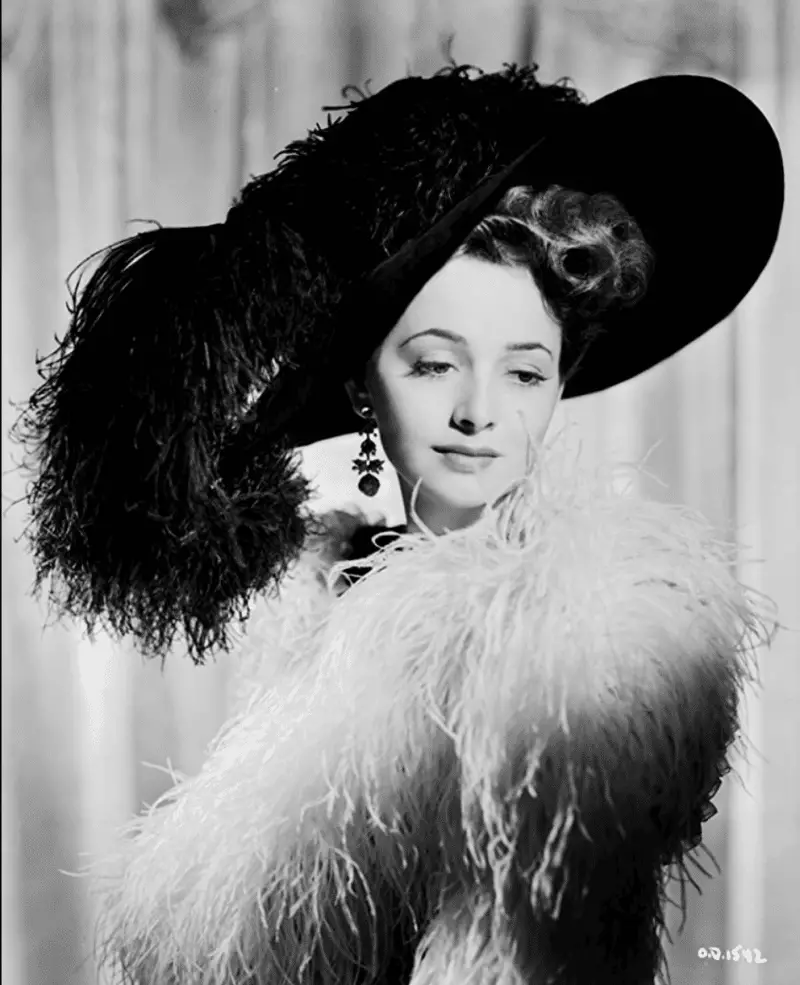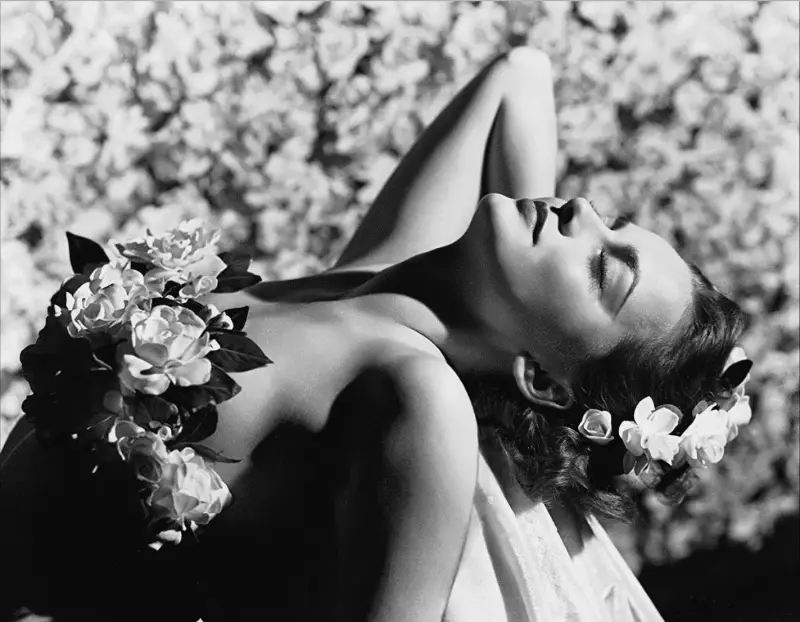The legendary actress Olivia de Havilland passed away at the grand age of 104 on Saturday, July 25th 2020. Born July 1, 1916 the two time Oscar Winner, Golden Globe Winner and respected actress for over 10 decades, died of natural causes during her sleep at her home in Paris.
Olivia de Havilland Life in Pictures

She brought us so much during her long and prolific career as an actress. The Adventures of Robin Hood, The Heiress, To Each His Own, Gone With The Wind, Hush Hush Sweet Charlotte, Airport ’77 and much more. Sister of actress Joan Fontaine, with whom she had a tumultuous relationship, she’s best known for her portrayal of Melanie (Melly) Wilkes in 1939’s Gone With The Wind, despite losing the Oscar that year to fellow cast member Hattie McDaniel.
Often cast as the delicate, naive and sweet female, in real life she was sexy and tenacious. A survivor with a fierce desire to direct her own destiny on and off the screen. She was notorious in Hollywood for winning her lawsuit against Warner Bros. Studios over a contract dispute that changed the studio contract system forever.
If you’re a fan of the silver screen, of the glamorous Golden Age of Hollywood, you’ll love this round up of personal and professional photos of the actress through the years. Followed by a biography.























The following IMDb Mini Biography is by Denny Jackson/Robert Sieger:
Olivia Mary de Havilland was born July 1, 1916, in Tokyo, Japan, to British parents Lilian Augusta (Ruse), a former actress, and Walter Augustus de Havilland, an English professor and patent attorney. Her sister, Joan, later to become famous as Joan Fontaine, was born the following year. Her surname comes from her paternal grandfather, whose family was from Guernsey in the Channel Islands. Her parents divorced when Olivia was just three years old, and she moved with her mother and sister to Saratoga, California. After graduating from high school, where she fell prey to the acting bug, Olivia enrolled in Mills College in Oakland. It was while she was at Mills that she participated in the school play “A Midsummer Night’s Dream” and was spotted by Max Reinhardt. She so impressed Reinhardt that he picked her up for both his stage version and, later, the Warner Bros. film version in 1935.
She again was so impressive that Warner executives signed her to a seven-year contract. No sooner had the ink dried on the contract than Olivia appeared in three more films: The Irish in Us (1935), Alibi Ike (1935) and Captain Blood (1935), the latter with the man with whom her career would be most closely identified, heartthrob Errol Flynn. He and Olivia starred together in eight films during their careers. In 1939 Warner Bros. loaned her to David O. Selznick for the classic Gone with the Wind (1939). Playing sweet Melanie Hamilton, Olivia received her first nomination for an Academy Award for Best Supporting Actress, only to lose out to one of her co-stars in the film, Hattie McDaniel.
After GWTW, Olivia returned to Warner Bros. and continued to churn out films. In 1941 she played Emmy Brown in Hold Back the Dawn (1941), which resulted in her second Oscar nomination, this time for Best Actress. Again she lost, this time to her sister Joan for her role in Suspicion (1941). After that strong showing, Olivia now demanded better, more substantial roles than the “sweet young thing” slot into which Warners had been fitting her. The studio responded by placing her on a six-month suspension, all of the studios at the time operating under the policy that players were nothing more than property to do with as they saw fit. As if that weren’t bad enough, when her contract with Warners was up, she was told that she would have to make up the time lost because of the suspension.
Irate, she sued the studio, and for the length of the court battle she didn’t appear in a single film. The result, however, was worth it. In a landmark decision, the court said not only that Olivia did not have to make up the time, but that all performers were to be limited to a seven-year contract that would include any suspensions handed down. This became known as the “de Havilland decision”; no longer could studios treat their performers as chattel. Returning to screen in 1946, Olivia made up for lost time by appearing in four films, one of which finally won her the Oscar that had so long eluded her. It was To Each His Own (1946), in which she played Josephine Norris to the delight of critics and audiences alike. Olivia was the strongest performer in Hollywood for the balance of the 1940s.
In 1948 she turned in another strong showing in The Snake Pit (1948) as Virginia Cunningham, a woman suffering a mental breakdown. The end result was another Oscar nomination for Best Actress, but she lost to Jane Wyman in Johnny Belinda (1948). As in the two previous years, she made only one film in 1949, but she again won a nomination and the Academy Award for Best Actress for The Heiress (1949). After a three-year hiatus, Olivia returned to star in My Cousin Rachel (1952). From that point on, she made few appearances on the screen but was seen on Broadway and in some television shows. Her last screen appearance was in The Fifth Musketeer (1979), and her last career appearance was in the TV movie The Woman He Loved (1988).
Her turbulent relationship with her only sibling, Joan Fontaine, had been press fodder for many decades, with the two reported as not speaking and permanently estranged since the death of their mother in 1975 when Joan claimed she had not been invited to the memorial service, which event she claimed she only managed to hold off until she could arrive by threatening to go public. Joan had also written in her memoir that her elder sister had been physically, psychologically and emotionally abusive when they were young. And the iconic photo of Joan with her hand outstretched to congratulate Olivia backstage after the latter’s first Oscar win and Olivia ignoring it because she was peeved by a comment Joan had made about Olivia’s new husband, Marcus Goodrich, remained part of Hollywood lore for many years.
Nonetheless, late in life, Fontaine gave an interview in which she serenely denied any and all claims of an estrangement from her sister. When a reporter asked Joan if she and Olivia were friends, she replied, “Of course!” The reporter responded that rumors to the contrary must have been sensationalism and she replied, “Oh, right – they have to. Two nice girls liking each other isn’t copy.” Asked if she and Olivia were in communication and spoke to each other, Joan replied “Absolutely.” When asked if there ever had been a time when the two did not get along to the point where they wouldn’t speak with one another, Joan replied, again, “Never. Never. There is not a word of truth about that.” When asked why people believe it, she replied “Oh, I have no idea. It’s just something to say … Oh, it’s terrible.” When asked if she had seen Olivia over the years, she replied, “I’ve seen her in Paris. And she came to my apartment in New York often.” The reporter stated that all this was a nice thing to hear. Joan then stated, “Let me just say, Olivia and I have never had a quarrel. We have never had any dissatisfaction. We have never had hard words. And all this is press.”
During the hoopla surrounding the 50th anniversary of GWTW in 1989, she graciously declined requests for all interviews as the only surviving one of the four main stars. Until her death in 2020, she enjoyed a quiet retirement in Paris, France, where she resided for many decades.

Thank you Olivia de Havilland. May you forever Rest in Peace.
